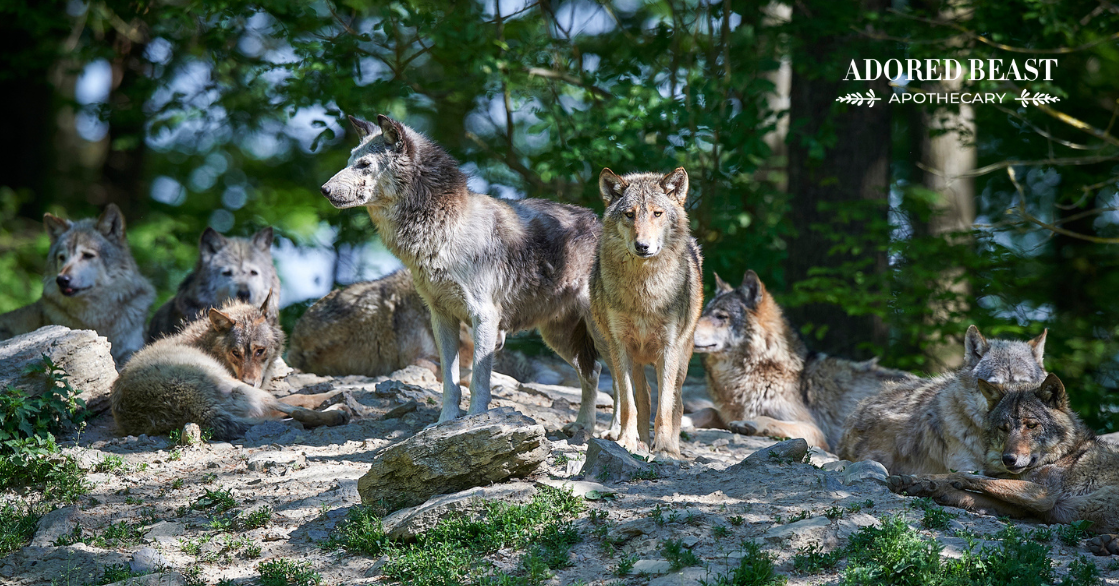Here at Adored Beast, we’re big proponents of a raw food diet. When it comes to the health of our animals, we’ve seen the difference fresh, whole foods can make. From skin health to joint health to heart health (and everything in between), we know that, just like us, our animals benefit greatly from fresh food.
For example, as humans, we know diet has a huge impact on our own metabolism. But what about our dogs? A new study on raw dog food vs kibble from the University of Helsinki suggests that our dogs’ bodies may actually handle fat far better than carbohydrates, and the difference could have lasting effects on their health.
Let’s take a closer look at what the researchers found, and what it might mean for your dog’s diet.
What the Study Looked At
Researchers from the University of Helsinki’s DogRisk group wanted to better understand how different macronutrients (fats versus carbs) affect dogs’ metabolism.
To do this, they studied 46 Staffordshire Bull Terriers and divided them into two diet groups:
- The first group was fed a high-carbohydrate kibble diet (a typical commercial kibble, rich in non-fiber carbohydrates).
- The second group was fed a raw meat–based diet that contained no non-fibre carbohydrates, and was much higher in fat and protein.
The dogs followed these diets for about 4.5 months. Throughout the study, researchers monitored several key health markers, including:
- Blood sugar and insulin
- Cholesterol and triglycerides (blood lipids)
- Ketone levels
- Glucagon (a hormone that regulates glucose)
- Body weight
They also calculated something called the triglyceride-glucose index (TGI). This is the measure of insulin resistance often used in human health research. Pretty cool stuff, no?
Raw Dog Food vs Kibble: The Results
The results were striking.
Dogs eating the high-carb kibble diet showed:
- Higher long-term blood sugar (suggesting poorer glucose control)
- Increased blood lipids (cholesterol and triglycerides)
- Weight gain over the course of the study
Meanwhile, dogs on the high-fat, low-carb raw diet showed the opposite trend:
- Lower blood sugar and insulin levels
- Lower blood lipids
- Reduced glucagon levels
- Higher ketone bodies (a sign that the body was using fat for energy)
- Improved triglyceride-glucose index, suggesting better insulin sensitivity
In a nutshell, the dogs on the raw diet appeared to have healthier metabolic responses, while those on kibble showed changes typically associated with poorer metabolic health.
What does that mean, exactly? Well, when scientists say “metabolic health,” they’re talking about how well the body turns food into energy.
- If a dog has good metabolic health, their body uses nutrients efficiently – keeping blood sugar, cholesterol, and weight in a healthy range.
- If a dog has poor metabolic health, those systems start to get out of balance, which can lead to things like insulin resistance, weight gain, or inflammation over time.
So in this study, the raw-fed dogs’ bodies handled food and energy better, while the kibble-fed dogs’ results pointed toward the early stages of metabolic stress.
What This Means for Dog Health
So, what do these findings actually mean for your dog? A few things, actually.
- Better Blood Sugar Control – The dogs on the raw, fat-rich diet had lower average blood sugar levels. That’s a good sign, as it suggests their bodies weren’t working overtime to manage glucose. Over time, better blood sugar control could reduce the risk of insulin resistance or diabetes.
- Healthier Lipid Levels – Lower triglycerides and cholesterol suggest a more balanced metabolic state. While dogs don’t get heart disease in the same way humans do, elevated lipids are linked to obesity, inflammation, and pancreatitis risk.
- Easier Weight Management – Dogs on the kibble diet gained more weight. Excess weight is one of the biggest contributors to health problems in pets, affecting joints, mobility, and even lifespan.
- More “Metabolic Flexibility” – The higher ketone levels in the raw-fed dogs indicate they were better able to use fat as a fuel source. This may help dogs maintain more stable energy levels and avoid the ups and downs associated with high-carb diets.
- Improved Insulin Sensitivity – The lower TGI scores in the raw-fed group suggest improved insulin sensitivity – a key factor in preventing metabolic diseases, such as diabetes, Cushing’s disease, and Addison’s disease.
[RELATED] Want to learn more about raw dog food vs kibble? Check out our Raw Feeding Resources.
Study Limitations?
Now, of course, we would be remiss not to cover any limitations of the study – we always want to look at the big picture:
- The study only lasted 4.5 months. It shows short-term metabolic effects, not long-term health outcomes.
- All dogs were the same breed. Different breeds, or even individual dogs, may respond differently. While dog physiology is generally the same for all dogs, different breeds do have different body compositions. For example, some breeds have larger metabolically active organs relative to their overall size, which affects their metabolism and lifespan.
- Not all kibbles are the same. Some are lower in carbs and higher in protein and fat. Others are loaded with starches. The kibble used in the study was Hill’s Science Diet Canine Adult Sensitive Stomach & Skin with Chicken if you’re looking to compare.
- Raw diets are not for all dogs. Some dogs love raw food, while others just refuse to convert. Additionally, dogs with certain health conditions may not be the best candidates for raw food, and a balanced home-cooked diet might be better. In this case, if you are considering switching, it’s a good idea to discuss it with your homeopathic or integrative veterinarian.
The researchers themselves emphasize that more research is needed before making broad recommendations. Still, the findings give weight to what many pet nutrition experts have suspected for years – that dogs thrive on a diet with more fat and protein, and fewer processed carbs.
This study adds to a growing body of evidence on the benefits of raw dog food vs kibble. Of course, while that doesn’t mean every dog needs to be on a raw diet, it does highlight the importance of reading labels and choosing foods that prioritize animal-based protein and healthy fats over cheap carb fillers. We all try to do the absolute best that we can for our adored beasts, and that means choosing the food that best meets their needs and helps them thrive. Knowing more is doing more, and when we see new research like this, we all benefit!












